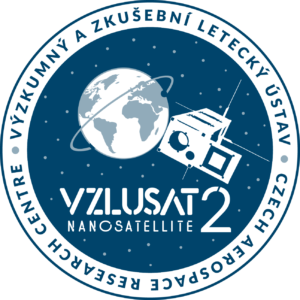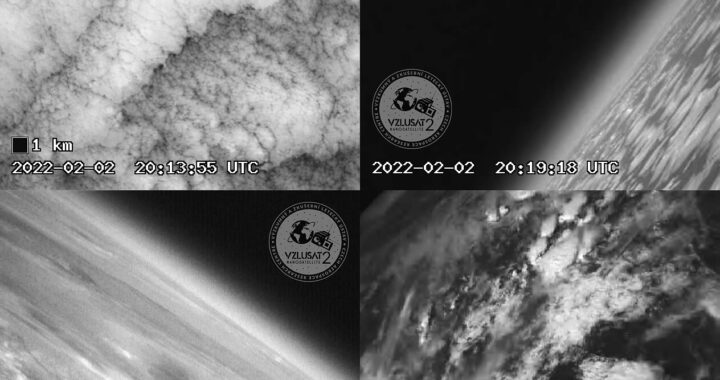Experts from the Czech Aerospace Research Centre (VZLU) put into operation the first group of systems on board the VZLUSAT-2. As the next step, calibration and commissioning of more advanced systems will take place.
After a successful deployment of the VZLUSAT-2 satellite from the ION carrier on January 26, 2022, first signals from the satellite were received by several amateur stations of the SatNOGS network. Later, during the first pass over the Czech Republic, the satellite was also received by the ground control centre in Pilsen. From that moment on, the process of gradual commissioning of the VZLUSAT-2 satellite started.
The first part of commissioning included verification of the satellite platform systems, i.e., the power supply system, the UHF radio communication, and the on-board computer. Initial values of the satellite temperature indicated that the satellite was cooled down to -10 ° C, which was caused by its 11-day stay inside the deployer. After turning the satellite systems on, the temperature inside the satellite increased to operating temperature in the 0 ° C to + 10 ° C range.
Among the devices commissioned in this first batch was also a high-resolution camera. The aim was to verify the functionality of the camera and to take the first images in high resolution, without pointing the satellite to a specific area. During the process of taking pictures, the satellite rotated slowly, taking shots of the horizon, as well as details of the clouds over the Pacific Ocean. As the next step, commissioning of the second RGB camera system with a larger field of view will take place.
“The goal of the mission is to take pictures of the Czech Republic, both in low and high resolution. However, to get there, there is still long way to go, it is necessary to precisely control the satellite pointing, which is something that no one has ever done in the Czech Republic. All sensors and especially the reaction wheels of this system are now operational and therefore we plan to move to the next phase in the upcoming days and commission the entire attitude control system, “explains Vladimír Dániel. VZLUSAT-2 has two camera systems on board, both developed in cooperation between Eltvor Instruments and VZLU.
In the second week after the deployment, gamma-ray burst detector for Masaryk University in Brno and Konkoly Observatory and X-ray solar cameras from Rigaku Innovative Technologies Europe and ADVACAM were turned on. Both devices have successfully performed the first measurements and are now also awaiting gradual commissioning.
“Overall, we are very satisfied with the first phase of satellite commissioning, everything is going without any problems. It is a great success that we managed to put everything into operation on the very first try, which also applies to the individual systems supplied by our partners, “concludes Juraj Dudáš, Director of the Space Division of VZLÚ.
The VZLUSAT-2 satellite, developed at VZLU was launched by the Falcon 9 rocket on January 13, 2022. The VZLUSAT-2 boarding pass was provided by Spacemanic. The mission was supported by the Ministry of Industry and Trade and the TAČR project led by esc Aerospace in cooperation with the Czech Technical University in Prague and the University of West Bohemia in Pilsen. The satellite orbits on a polar orbit at an altitude of between 521 km and 543 km.
Thanks to VZLU’s involvement in the worldwide SatNOGS ground station network, it is possible to continuously monitor satellite telemetry data on the publicly available website https://dashboard.satnogs.org/d/L8ywE9oMz/vzlusat-2?orgId=1. The data is collected from more than 50 stations deployed all around the globe.


